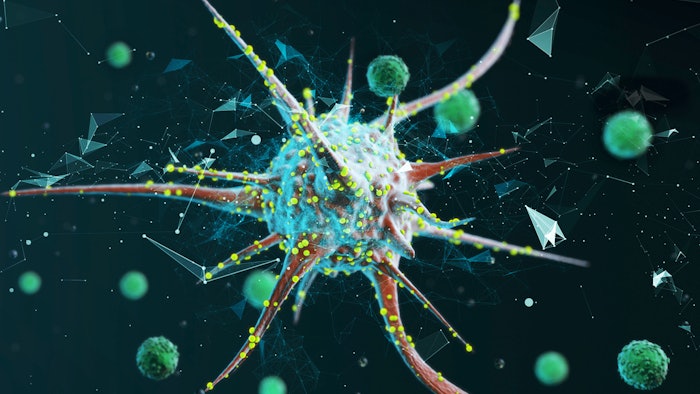Platelets Endocytose Viral Particles and Are Activated Via TLR (Toll-Like Receptor) Signaling

Abstract

Objective:
Thrombocytopenia is associated with many viral infections suggesting virions interact with and affect platelets. Consistently, viral particles are seen inside platelets, and platelet activation markers are detected in viremic patients. In this article, we sought mechanistic insights into these virion/platelet interactions by examining how platelets endocytose, traffic, and are activated by a model virion.
Approach and Results:
Using fluorescently tagged HIV-1 pseudovirions, 3-dimensional structured illumination microscopy, and transgenic mouse models, we probed the interactions between platelets and virions. Mouse platelets used known endocytic machinery, that is, dynamin, VAMP (vesicle-associated membrane protein)-3, and Arf6 (ADP-ribosylation factor 6), to take up and traffic HIV-1 pseudovirions. Endocytosed HIV-1 pseudovirions trafficked through early (Rab4+) and late endosomes (Rab7+), and then to an LC3+ (microtubule-associated protein 1A/1B-light chain 3) compartment. Incubation with virions induced IRAK4 (interleukin 1 receptor–associated kinase 4), Akt (protein kinase B), and IKK (IκB kinase) activation, granule secretion, and platelet-leukocyte aggregate formation. This activation required TLRs (Toll-like receptors) and MyD88 (myeloid differentiation primary response protein 88) but was less extensive and slower than activation with thrombin. In vivo, HIV-1 pseudovirions injection led to virion uptake and platelet activation, as measured by IKK activation, platelet-leukocyte aggregate formation, and mild thrombocytopenia. All were decreased in VAMP-3−/− and, megakaryocyte/platelet-specific, Arf6−/− mice. Similar platelet activation profiles (increased platelet-leukocyte aggregates, plasma platelet factor 4, and phospho-IκBα) were detected in newly diagnosed and antiretroviral therapy–controlled HIV-1+ patients.
Conclusions:
Collectively, our data provide mechanistic insights into the cell biology of how platelets endocytose and process virions. We propose a mechanism by which platelets sample the circulation and respond to potential pathogens that they take up.
Full text of this article can be found at: https://www.ahajournals.org/doi/10.1161/ATVBAHA.120.314180